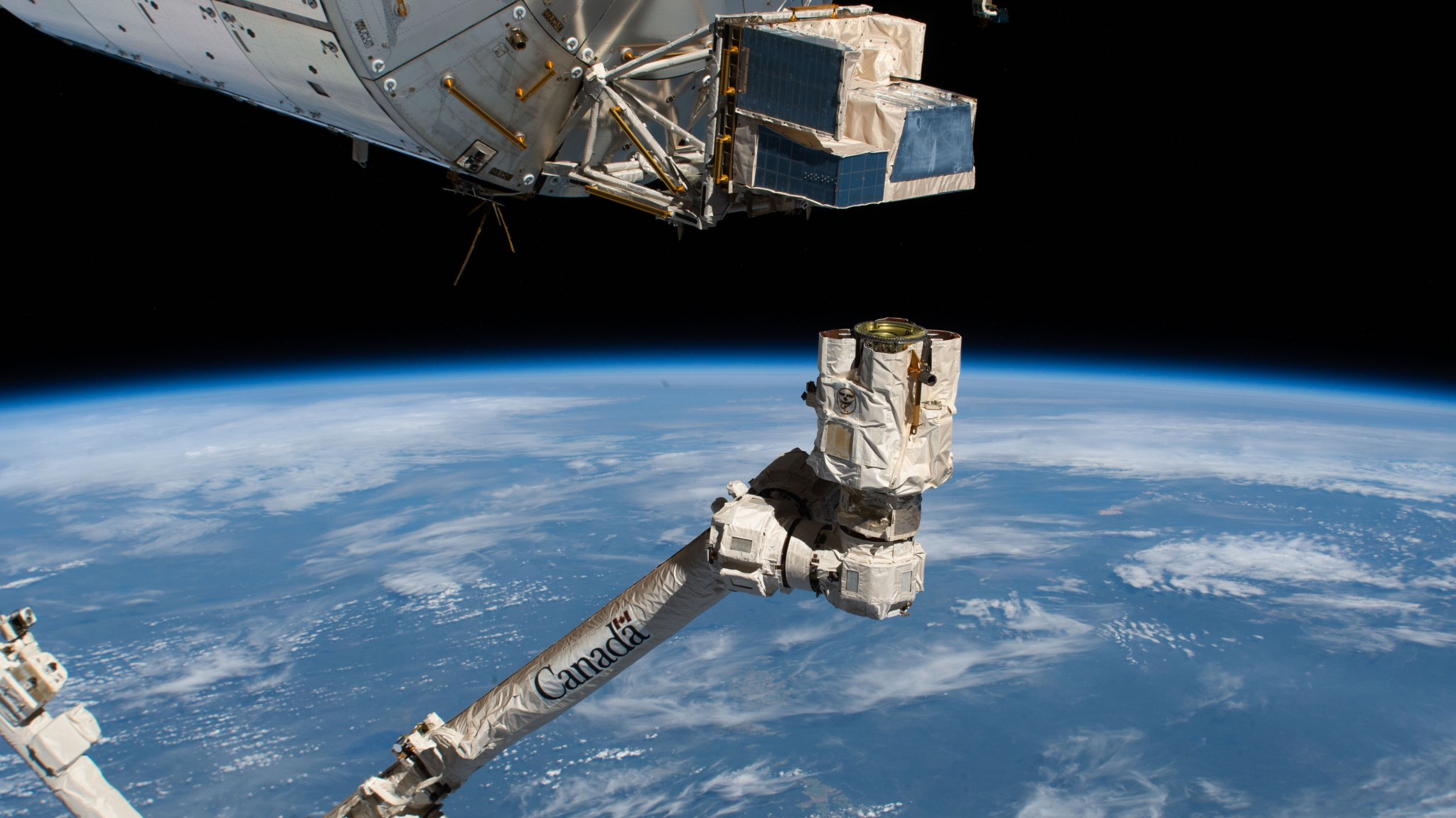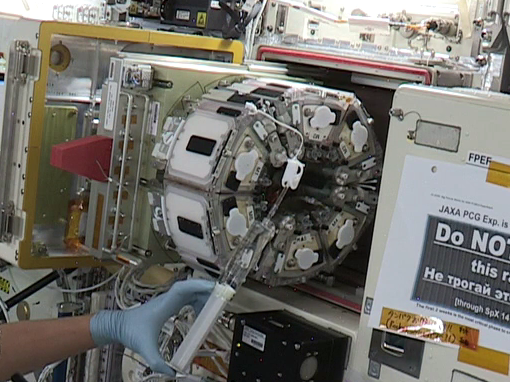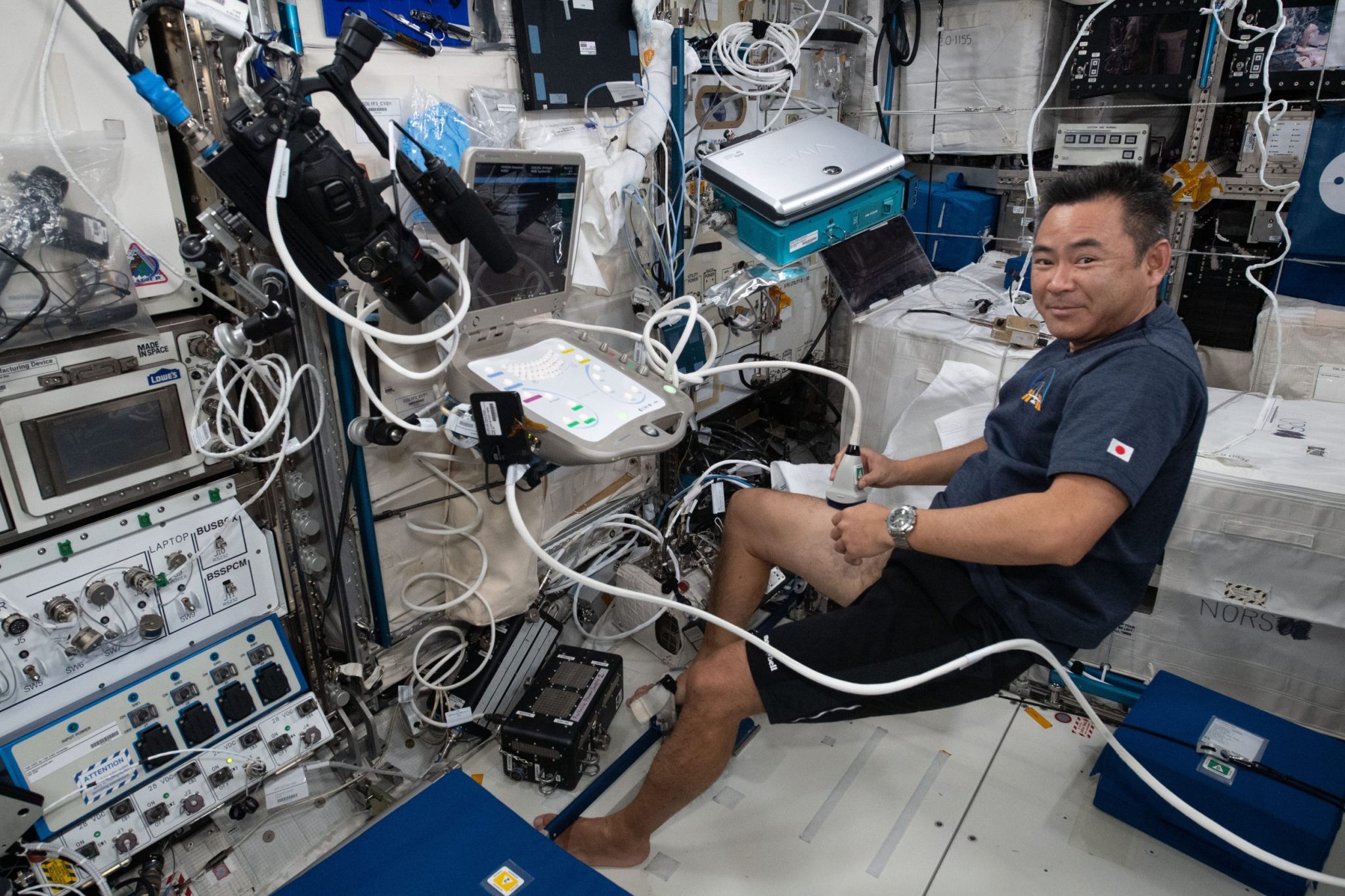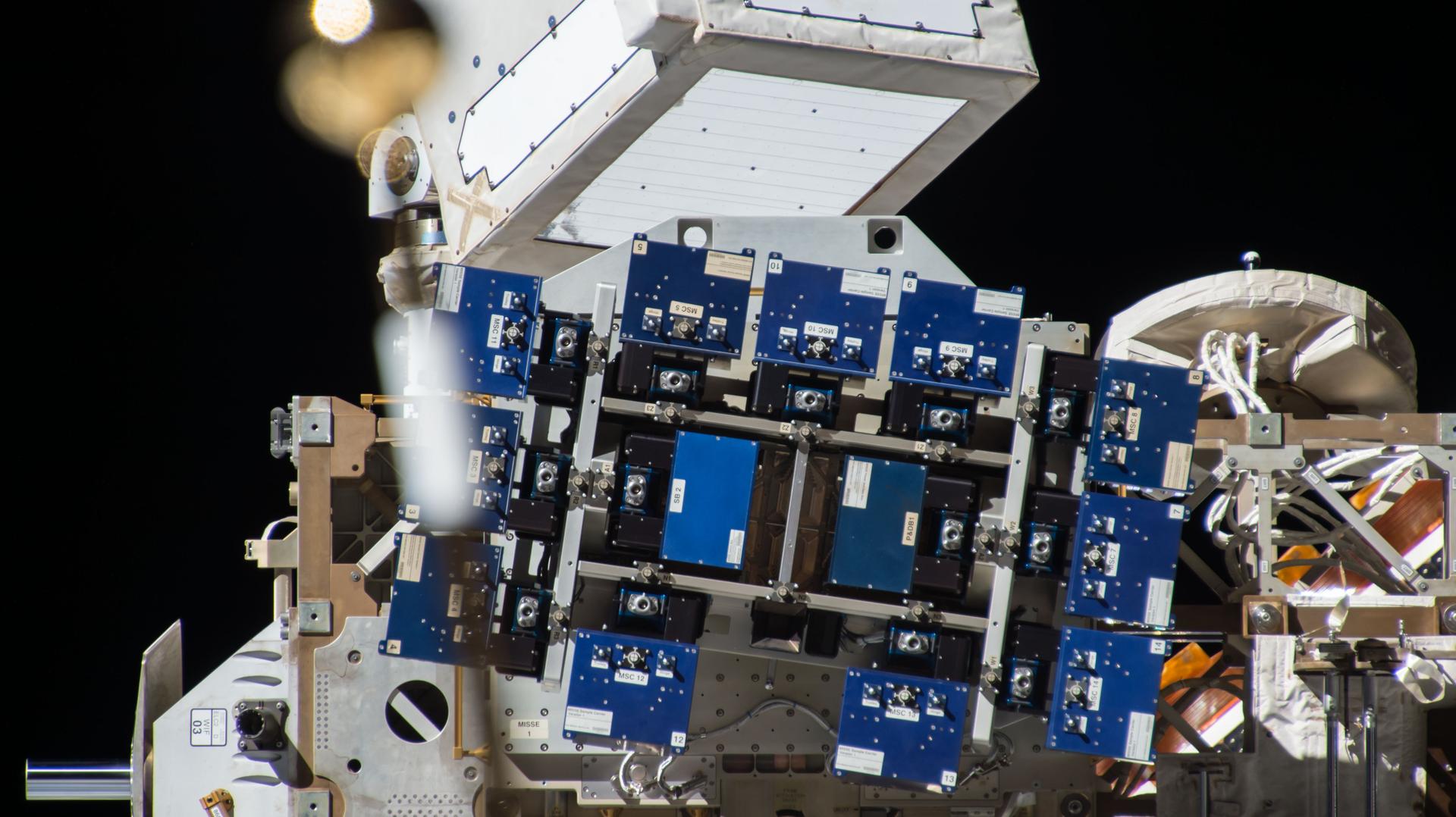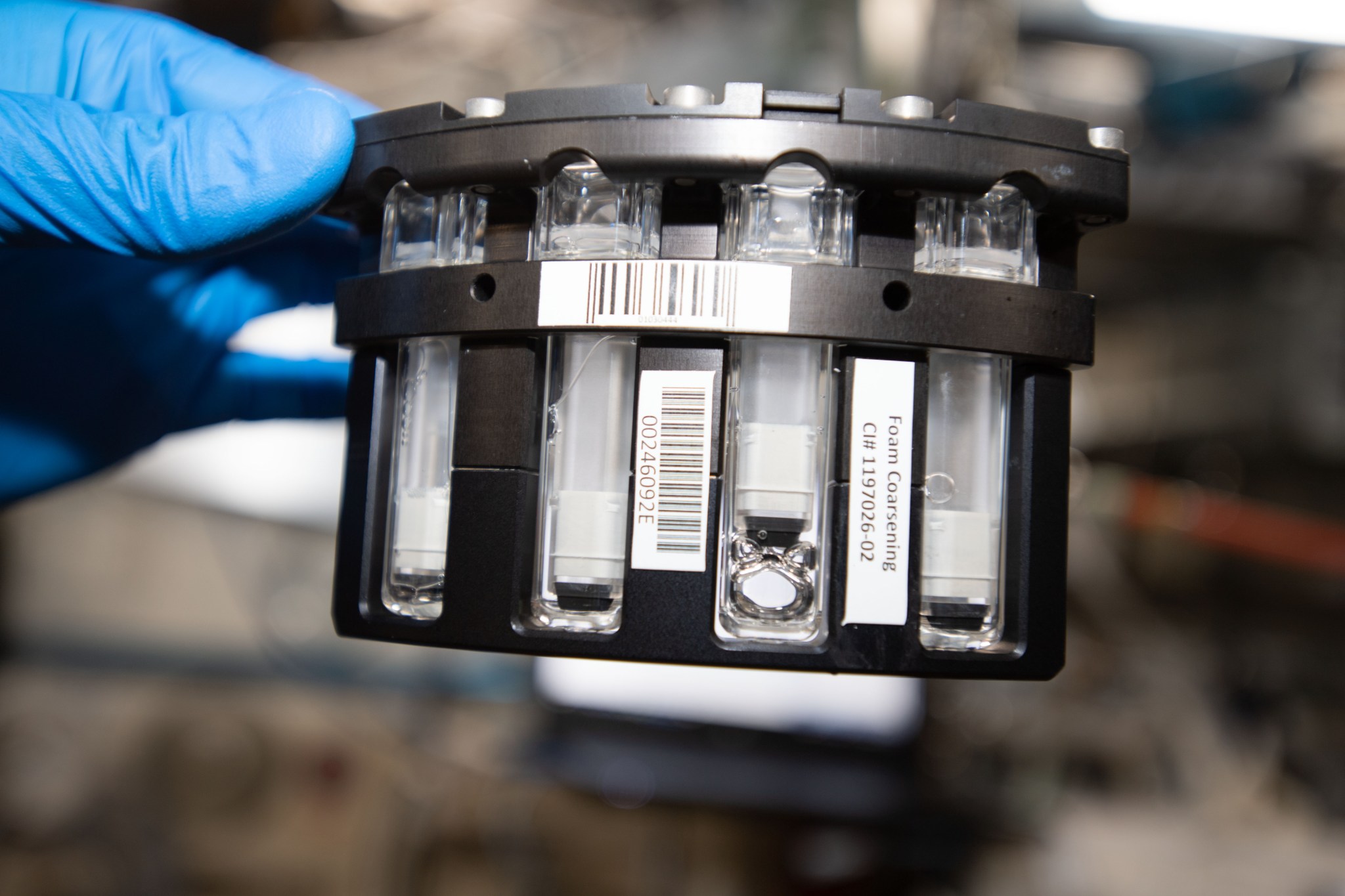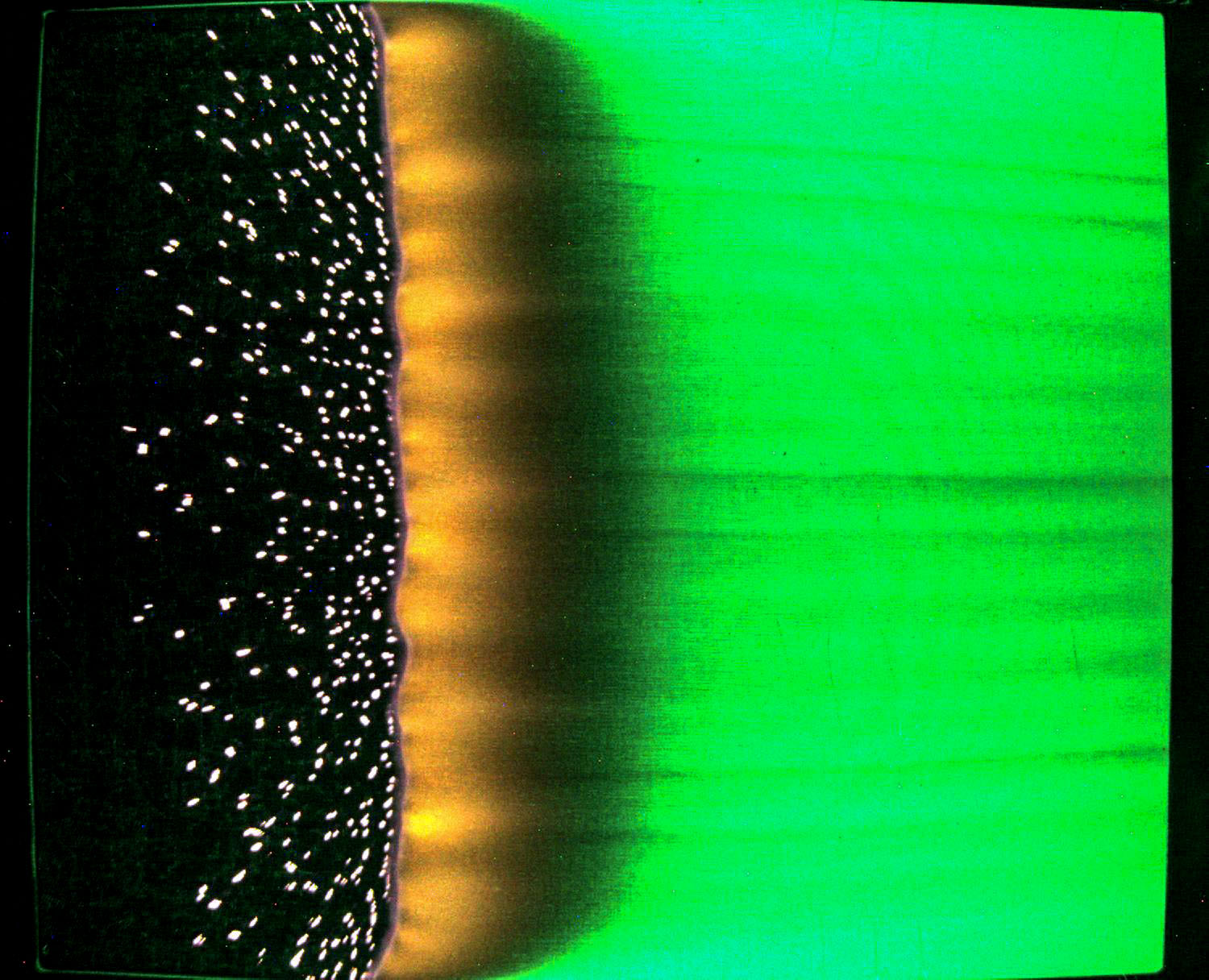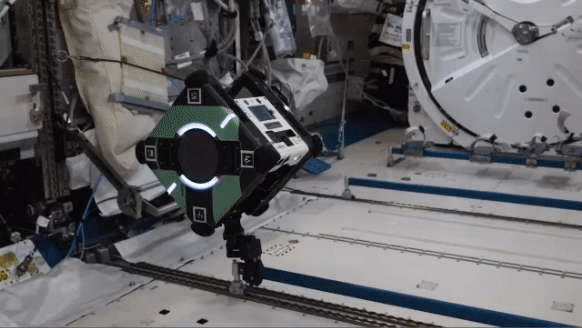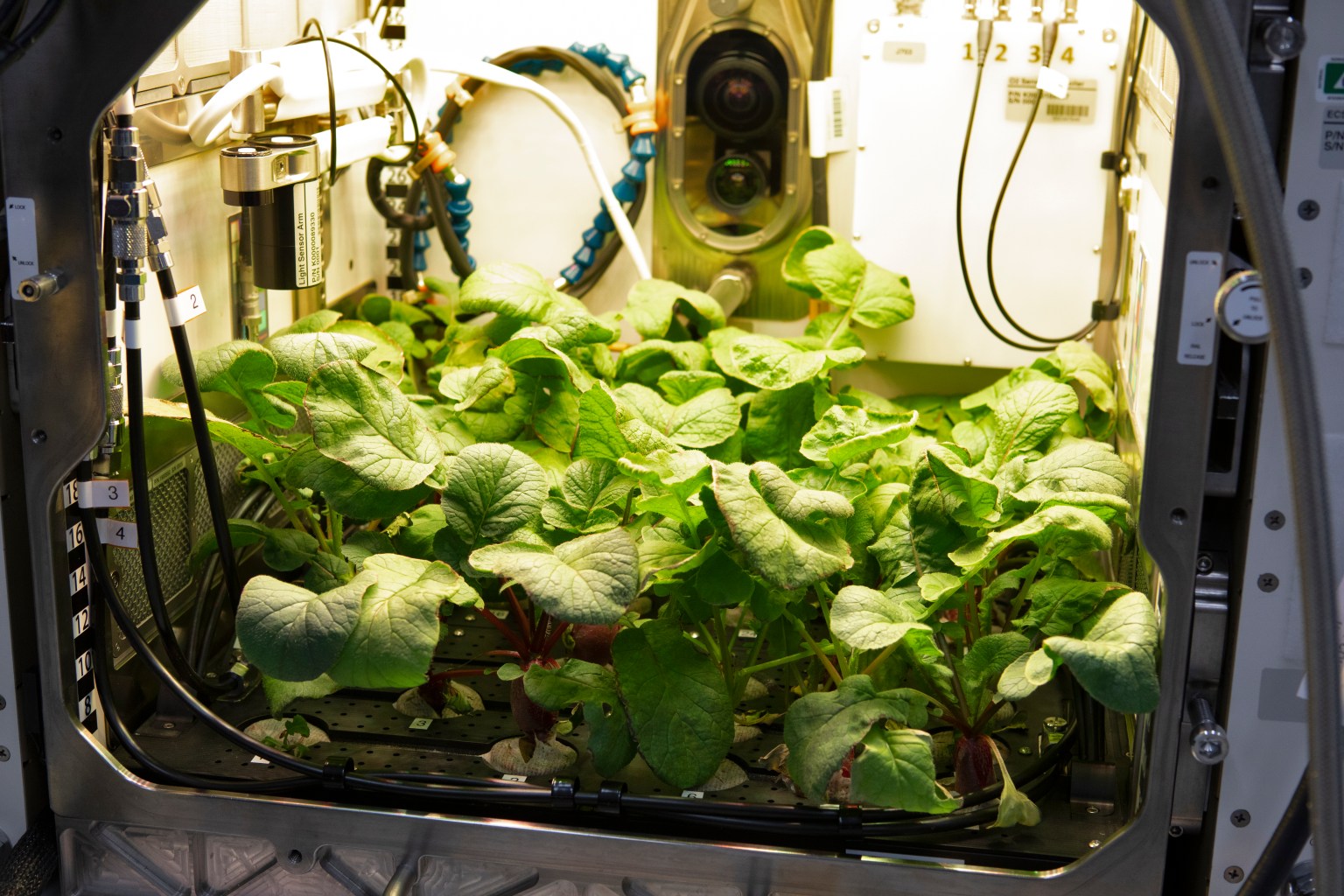Lee esta historia en español aquí.
The International Space Station is a microgravity research lab hosting groundbreaking technology demonstrations and scientific investigations. More than 3,700 investigations conducted to date have generated more than 4,000 research articles published in scientific journals. In 2023, the orbiting lab hosted approximately 500 investigations.
See more space station research achievements and findings in the Annual Highlights of Results publication, and read highlights of results published between October 2022 and October 2023 below:
A New Spin on Pulsars
Neutron stars, ultra-dense matter left behind when massive stars explode as supernovas, are also called pulsars because they spin and emit X-ray radiation in beams that sweep the sky like lighthouses. The Neutron star Interior Composition Explorer (NICER) collects this radiation to study the structure, dynamics, and energetics of pulsars. Researchers used NICER data to calculate rotations of six pulsars and update mathematical models of their spin properties. Precise measurements enhance the understanding of pulsars, including their production of gravitational waves, and help address fundamental questions about matter and gravity.
Learning from Lightning
Atmosphere-Space Interactions Monitor (ASIM) studies how upper-atmospheric electrical discharges generated by severe thunderstorms affect Earth’s atmosphere and climate. These events occur well above the altitudes of normal lightning and storm clouds. Using ASIM data, researchers reported the first detailed observations of development of a of negative leader, or initiation of a flash, from in-cloud lightning. Understanding how thunderstorms disturb the high-altitude atmosphere could improve atmospheric models and climate and weather predictions.
Regenerating Tissue in Space
Tissue Regeneration-Bone Defect (Rodent Research-4 (CASIS)), sponsored by the ISS National Lab, examined wound healing mechanisms in microgravity. Researchers found that microgravity affected the fibrous and cellular components of skin tissue. Fibrous structures in connective tissue provide structure and protection for the body’s organs. This finding is an initial step to use connective tissue regeneration to treat disease and injuries for future space explorers.
Mighty Muscles in Microgravity
JAXA (Japan Aerospace Exploration Agency) developed the Multiple Artificial-gravity Research System (MARS), which generates artificial gravity in space. Three JAXA investigations, MHU-1, MHU-4, and MHU-5, used the artificial-gravity system to examine the effect on skeletal muscles from different gravitation loads – microgravity, lunar gravity (1/6 g), and Earth gravity (1 g). Results show that lunar gravity protects against loss of some muscle fibers but not others. Different gravitational levels may be needed to support muscle adaptation on future missions.
Better Ultrasound Images
Vascular Echo, an investigation from CSA (Canadian Space Agency), examined changes in blood vessels and the heart during and after spaceflight using ultrasound and other measures. Researchers compared 2D ultrasound technology with a motorized 3D ultrasound and found that 3D is more accurate. Better measurements could help maintain crew health in space and quality of life for people on Earth.
This is Your Brain in Space
The Brain-DTI investigation from ESA (European Space Agency) tested whether the brain adapts to weightlessness by using previously untapped connections between neurons. MRI scans of crew members before and after spaceflight demonstrate functional changes in specific brain regions, confirming the adaptability and plasticity of the brain under extreme conditions. This insight supports the development of ways to monitor brain adaptations and countermeasures to promote healthy brain function in space and for those with brain-related disorders on Earth.
Improving Solar Materials
Metal halide perovskite (MHP) materials convert sunlight into electrical energy and show promise for use in thin-film solar cells in space due to low cost, high performance, suitability for in-space manufacturing, and defect and radiation tolerance. For Materials International Space Station Experiment-13-NASA (MISSE-13-NASA), which continues a series investigating how space affects various materials, researchers exposed perovskite thin films to space for ten months. Results confirmed their durability and stability in this environment. This finding could lead to improvements in MHP materials and devices for space applications such as solar panels.
Understanding Bubbles in Foams
Wet foams are dispersions of gas bubbles in a liquid matrix. An ESA investigation, FSL Soft Matter Dynamics or FOAM, examines coarsening, a thermodynamic process where large bubbles grow at the expense of smaller ones. Researchers determined the coarsening rates for various types of foams and found close agreement with theoretical predictions. A better understanding of foam properties could help scientists improve these substances for a variety of uses, including firefighting and water treatment in space and making detergents, food, and medicine on Earth.
Answering Burning Questions
Fire is a constant concern in space. The Saffire series of experiments studies flame conditions in microgravity using empty Cygnus resupply spacecraft that have undocked from the space station. Saffire-IV examined fire growth with different materials and conditions and showed that a technique called color pyrometry can determine the temperature of a spreading flame. The finding helps validate numerical models of flame properties in microgravity and provides insight into fire safety on future missions.
The Robot Hop
Astrobatics tests robotic movement using hopping or self-toss maneuvers by the station’s Astrobee robots. In low gravity, robots could move faster, use less fuel, and cover otherwise impassable terrain with these maneuvers, expanding their orbital and planetary capabilities. Results verified the viability of the locomotion method and showed that it provides a greater range of distance. The work is a step toward autonomous robotic helpers in space and on other celestial bodies, potentially reducing the need to expose astronauts to risky environments.
Melissa Gaskill
International Space Station Research Communications Team
Johnson Space Center
Search this database of scientific experiments to learn more about those mentioned above.



























